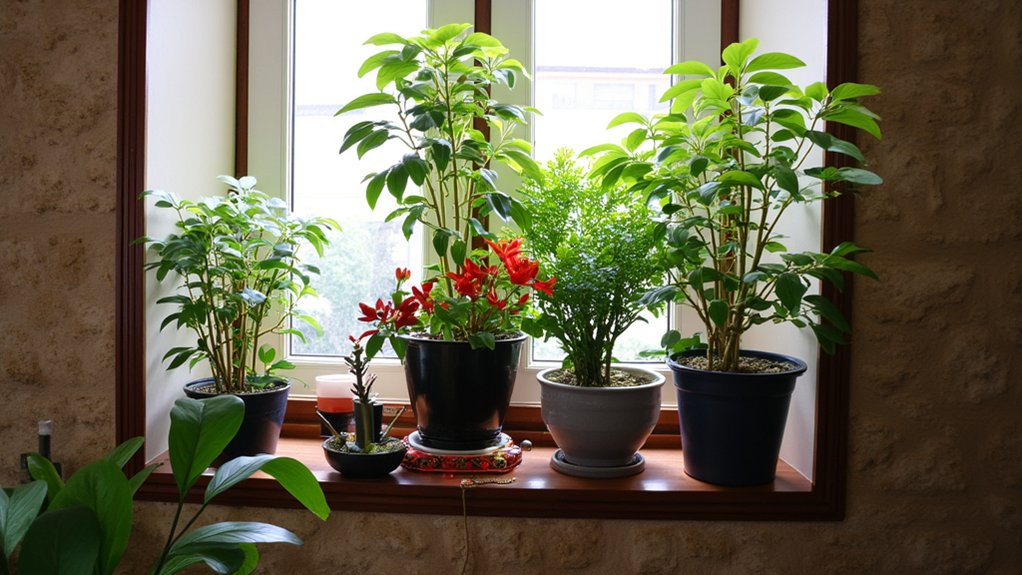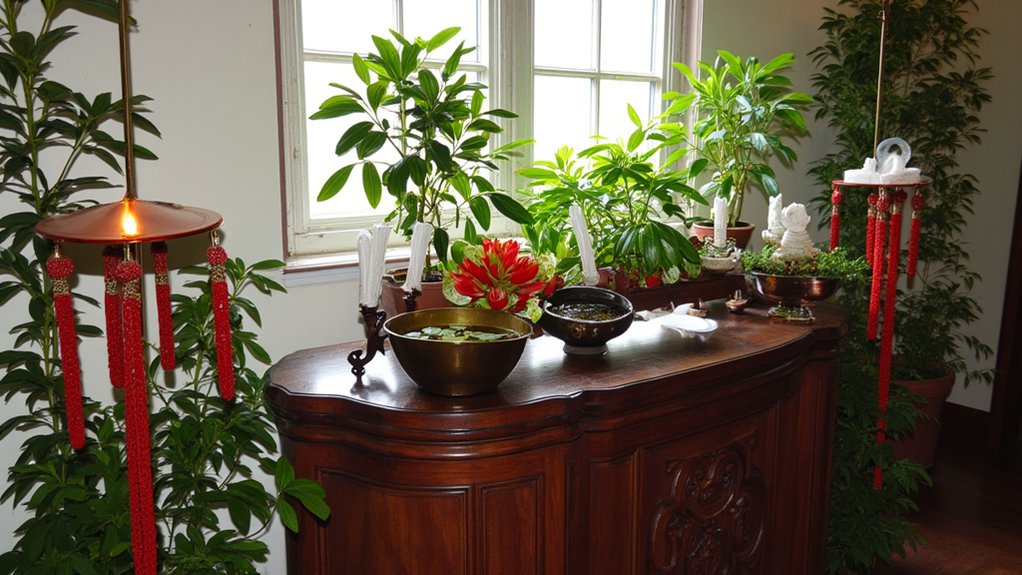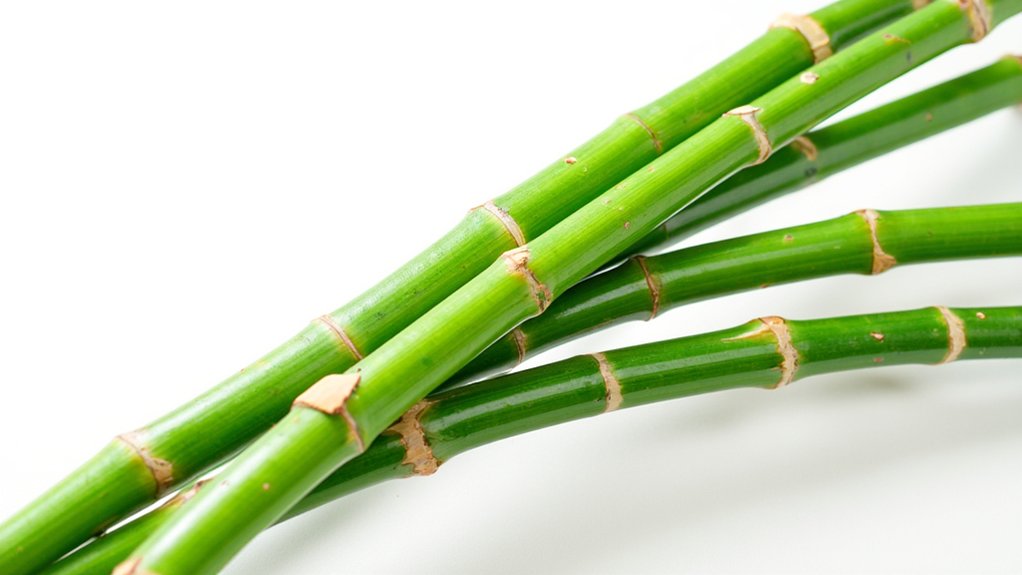When Sarah brought a jade plant into her new office, her colleagues smiled knowingly – within six months, she’d received two promotions. You’ve likely encountered similar stories about plants that seem to attract success, wealth, or good fortune. While scientific evidence may not support supernatural claims about lucky plants, centuries of cultural beliefs and documented coincidences suggest there’s more to these green companions than meets the eye. Let’s explore what makes certain plants special enough to earn their fortunate reputations.
Contents
- 1 The Ancient Origins of Lucky Plant Traditions
- 2 Sacred Plant Beliefs Across World Cultures
- 3 The Science Behind Plant Symbolism
- 4 Most Popular Lucky Plants and Their Meanings
- 5 Growing and Caring for Fortune-Bringing Plants
- 6 Lucky Plants in Modern Interior Design
- 7 Cultural Significance of Lucky Bamboo
- 8 Celtic Plant Lore and Sacred Greenery
- 9 Prosperity Plants in Asian Traditions
- 10 The Psychology of Plant-Based Superstitions
The Ancient Origins of Lucky Plant Traditions

While many modern plant superstitions seem like recent cultural trends, the practice of associating plants with luck and fortune dates back over 5,000 years. You’ll find evidence of lucky plants in ancient Egyptian hieroglyphs, where lotus flowers symbolized rebirth and prosperity.
In ancient Rome, you’d see laurel wreaths adorning the heads of victorious leaders, while Celtic druids believed mistletoe could ward off evil spirits and bring fertility. Chinese culture has long regarded the bamboo plant as a powerful symbol of good fortune, with each segment representing a different blessing.
These botanical beliefs have shaped cultural practices you’ll still recognize today.
Sacred Plant Beliefs Across World Cultures

Sacred plants hold deep spiritual meaning in cultures worldwide, extending far beyond simple good luck charms. You’ll find bamboo revered in East Asia for its resilience, while Native Americans honor sage for its purifying properties during ceremonial rituals.
In India, you’ll discover the sacred tulsi (holy basil) plant adorning courtyards and temples, where it’s believed to protect homes and bring divine blessings. Celtic druids treasured mistletoe, considering it a powerful healing plant that connected the earthly domain with the spiritual world.
African traditions celebrate the baobab tree as a symbol of wisdom and longevity, with communities gathering beneath its branches for important ceremonies.
The Science Behind Plant Symbolism

Understanding why certain plants become cultural symbols requires examining both evolutionary psychology and neuroscience. Your brain’s limbic system creates emotional connections with specific plants based on their physical characteristics, scents, and your past experiences with them.
When you encounter plants with symmetrical patterns, vibrant colors, or pleasant fragrances, your brain releases dopamine and serotonin. These neurochemical responses, combined with cultural conditioning, lead you to associate certain plants with positive outcomes. That’s why you’ll find bamboo’s orderly segments and jade plants’ coin-shaped leaves consistently linked to prosperity across different societies.
Most Popular Lucky Plants and Their Meanings
Lucky plants have captivated cultures worldwide for thousands of years, each carrying unique symbolism and perceived benefits. You’ll find the bamboo plant leading the list, with its straight stalks representing strength and flexibility in Asian traditions.
The jade plant, often called the “money tree,” features oval leaves that resemble coins, while its thick trunk symbolizes a strong financial foundation. You’ll want to place these plants in your home’s southeast corner for ideal feng shui benefits.
The peace lily purifies air and represents tranquility, making it perfect for your bedroom or meditation space. Its white flowers traditionally symbolize prosperity and good fortune.
Growing and Caring for Fortune-Bringing Plants
While these cherished plants bring good fortune, they’ll only thrive with proper care and attention. Most lucky plants prefer bright, indirect sunlight and temperatures between 65-80°F. Water them when the top inch of soil feels dry, typically every 7-10 days.
For bamboo and money plants, use well-draining potting mix and containers with drainage holes. Feed them monthly with balanced liquid fertilizer during growing season. Trim yellowing leaves promptly, and rotate pots quarter-turn weekly for even growth.
Jade plants need less water – let soil dry completely between waterings. Place them in east-facing windows, and dust leaves monthly with a soft cloth.
Lucky Plants in Modern Interior Design
Today’s modern interior design seamlessly incorporates lucky plants into minimalist spaces through creative placement and thoughtful styling. You’ll find jade plants adorning sleek floating shelves, while bamboo stalks create vertical interest in bright corners. Mix traditional lucky plants with contemporary vessels, like placing a money tree in a matte black ceramic pot or displaying Chinese evergreen in geometric containers.
Consider positioning your fortune plants at ideal feng shui locations – lucky bamboo near your workspace, or peace lily by the entrance. Layer different heights and textures, combining smooth-leafed plants with textured varieties to create visual depth while maintaining clean, modern aesthetics.
Cultural Significance of Lucky Bamboo
Deeply rooted in Asian culture, bamboo stalks represent strength, wisdom, and prosperity across multiple traditions. You’ll often find lucky bamboo arranged in specific numbers, with three stalks for happiness, five for wealth, and seven for good health.
While it’s actually not bamboo at all but a species of Dracaena, this plant’s cultural impact spans centuries in China and Southeast Asia. You’ll need to place it in the east or southeast corner of your home for ideal feng shui benefits.
When you’re gifting lucky bamboo, remember that four stalks are considered unlucky in Chinese culture, as the word “four” sounds similar to “death.”
Celtic Plant Lore and Sacred Greenery
Throughout ancient Celtic traditions, sacred plants formed the cornerstone of spiritual practices, healing rituals, and protective magic. You’ll find oak trees at the heart of druidic ceremonies, while rowan branches were hung over doorways to ward off evil spirits.
The Celts believed mistletoe, especially when harvested from oak trees during the winter solstice, held powerful healing properties. They’d collect it using golden sickles and catch the falling sprigs in white cloth, never letting them touch the ground.
Other revered plants included St. John’s wort for protection, hawthorn for fertility, and holly for good fortune during the cold months.
Prosperity Plants in Asian Traditions
In many Asian cultures, certain plants and trees serve as powerful symbols of prosperity, wealth, and abundance. You’ll often find jade plants (Crassula ovata) displayed in homes and businesses, with their thick, oval leaves representing growth and financial success.
The lucky bamboo (Dracaena sanderiana) isn’t actually bamboo, but it’s believed to attract fortune when arranged in specific numbers. Place three stalks for happiness, five for health, or eight for wealth in the southeast corner of your space.
Money trees (Pachira aquatica) feature distinctive braided trunks and five-lobed leaves. In feng shui practice, they’re most effective when positioned 3-4 feet from your front door.
The Psychology of Plant-Based Superstitions
When people develop beliefs about lucky plants, their minds create powerful associations that can influence behavior and perception. These psychological connections often stem from cultural conditioning, personal experiences, and the human tendency to seek meaning in natural objects.
You’ll notice that believing in a plant’s lucky properties can trigger the placebo effect, where positive expectations lead to real benefits. Your brain releases feel-good chemicals when you care for plants you consider fortunate, and you’re more likely to notice positive events that reinforce these beliefs.
Plant-based superstitions also serve as tangible reminders to stay optimistic and take productive action, which naturally increases your chances of success.
